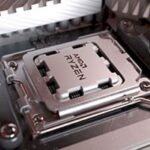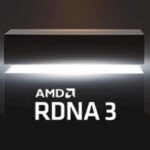
If that headline leaves you questioning what Phoenix and Dragon Range are, let’s get you in control first. Phoenix, apparently also called Phoenix Point (to not be confused with the game of the identical identify), is the codename for AMD’s future cell CPUs primarily based on the Zen 4 structure. They’ll embody Zen 4 CPU cores together with DDR5 reminiscence, PCIe 5.0 help, and highly effective built-in graphics primarily based on RDNA 3.
All of the above was basically confirmed by a brand new leak from RedGamingTech—assuming the leak is correct, anyway. In a YouTube video, embedded above, Paul from RedGamingTech lays out his predictions for AMD’s Phoenix and Dragon Range processors. Despite the latter being the quicker chips, it is positively Phoenix that’s the extra fascinating product household.
The slide above, taken from RedGamingTech’s video, clearly lays out his expectations for Phoenix. At the top-end, he expects the Ryzen 9 7980HS to have eight Zen 4 CPU cores and 6 RDNA 3 WGPs, which comes out to 1536 shaders—completely huge for an built-in GPU. Overall, when it comes to specs, they’ll basically be much like the extant “Rembrandt” processors that compose the Ryzen 6000 Series cell household, simply upgraded with Zen 4 and RDNA 3.
However, that ignores doubtlessly enormous adjustments in packaging and construction. Rembrandt is a monolithic die, however Phoenix will as a substitute apparently be a chiplet-based design, with separate bodily chips performing the processors’ numerous features. As you’ll be able to see within the mockup above, it’s predicted that, in contrast to extant Ryzen processors, the CPU cores and I/O will share a die. Meanwhile, there’ll supposedly be separate cube for graphics, the reminiscence controller and system-level cache shared by CPU and GPU.
Along with that mockup, he additionally shared another “low-confidence” details about Phoenix. One source claims that the Phoenix iGPU has some measure of Infinity Cache onboard; for our half, we suspect that is most likely a misunderstanding of the GPU’s means to entry a system-level cache (a lot as Intel’s IGPUs can do.) Alternatively, it has been mentioned up to now that Phoenix could include 3D V-Cache, so maybe there will likely be fashions that ship with 3D V-Cache serving as Infinity Cache for the built-in RDNA 3 GPU.
Meanwhile, it looks as if Dragon Range will basically be a clock-tuned variant of Raphael, as we talked about above. This is in direct response to Intel’s Alder Lake HX processors which can be likewise clock-tuned variants of the ADL desktop silicon. Just like Raphael, Dragon Range will scale as much as 16 cores, though clock charges will most likely range drastically between laptop computer distributors and fashions.
Raphael features a small GPU for fundamental graphics, and thus Dragon Range seemingly will too. It will likely be fascinating to see if AMD makes use of it for switchable graphics the best way Intel does, or if the Dragon Range IGP will merely be disabled. Either approach, it is encouraging to see AMD harmonizing its architectures throughout its product stack as a substitute of constructing APUs wait a era to get the most recent CPU and GPU know-how.









